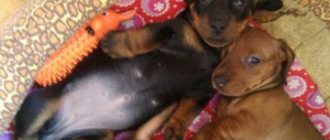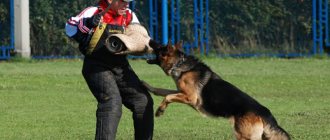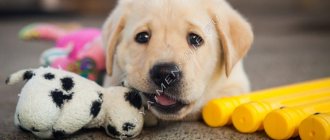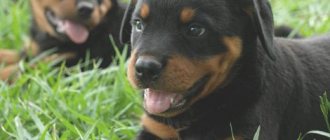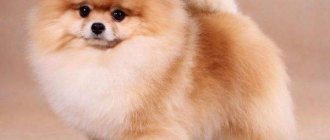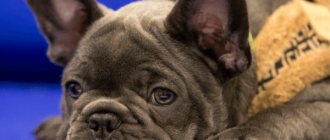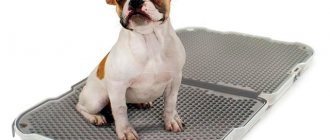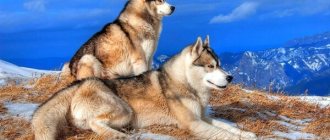Huskies have long won the world's love and trust. This is a friendly, hardy and very athletic breed with a relatively compact build. Dogs are able to build strong relationships with their owners, making them true friends for life. Today I would like to tell you about how to properly care for a husky and what nuances in care and maintenance should be taken into account first of all.
Huskies, however, like any other dogs, need comfortable conditions. Agree, without this it is impossible to raise a healthy and happy pet. The convenience of this breed lies in the fact that huskies can be kept both on the street and at home in an apartment. However, it is worth remembering that it is not advisable to put them on a chain.
Features and subtleties of content
If you are determined to purchase a dog of this breed, then this must be done in specialized nurseries. Keeping a husky is a responsibility and a competent approach. Prepare your pet's collar, food and water bowl. You also need to purchase:
- toys;
- muzzle;
- leash;
- grooming supplies;
- cooling mat;
- a special backpack as weight (so that the dog is not too active);
- halter.
It is also worth considering where the husky will live: in an apartment, in a private house or in a special outdoor enclosure.
Contents in the apartment
Remember that a husky is not a decorative toy, but a full-fledged Siberian sled dog that needs space and constant movement. The breed is quite calm and peaceful, therefore, it will not make a watchdog. Keeping a husky in an apartment requires constant walks.
If dogs are not walked, they begin to damage furniture, shoes, etc. Therefore, training and education are necessary from a very early age. During the absence of the owners, a special isolation cage is sometimes used. A Siberian Husky in an apartment should not always be in a confined space, which means that upon returning, do not forget to immediately open the cage door for him so that he can move around the house calmly.
Living in a private home
Huskies feel great in a private home. The dog easily tolerates frost and snowfall, but does not like heat. Huskies spend a lot of time outside, but they should not be in the sun for more than one hour. Therefore, you should take care of a canopy and a comfortable kennel with a roof that will allow your pet to easily jump up and rest. Another thing to keep in mind is that if a dog gets loose, it may start preying on farm animals.
Husky enclosure
First of all, the enclosure should be spacious and not restrict the dog’s movement. Freedom-loving pets willingly dig tunnels and easily jump over fences. Therefore, husky enclosures must meet all requirements and prevent the possibility of escape.
The enclosure must be carefully reinforced along the entire perimeter: a steel mesh must have thick rods and be of sufficient height. It is best to lay wooden boards or even paving slabs on the ground. A dog raised in the fresh air has good immunity, thick and shiny hair.
To cut or not to cut - that is the question
We humans have settled down well. We can come to the hairdresser and say: asymmetrical bob, please. Undercut from the back of the head. A bob with a ladder, and all this in ash blonde. In two hours we will leave the salon, and our hair, without losing structure, will begin to grow back immediately after the end of the haircut.
In dogs, in particular huskies , the situation with hair is completely different. The dog “bob” is a complex two-layer system, the violation of which is undesirable: the husky’s skin takes a long time to recover and the first time after the haircut is of lower quality. This harms both the appearance and well-being of the pet.
Features of care
In general, these dogs are very unpretentious; caring for a husky does not require complex manipulations. Maintaining external attractiveness and health comes down to hygiene procedures. Naturally, the pet must be regularly vaccinated, treated against fleas or ticks, and also given anti-helminth medications.
The most important thing to consider when keeping a husky is constant active walks. If a dog cannot get rid of the energy accumulated during the day, then it begins to experience psychological and physical discomfort. It is worth remembering that huskies were bred to work, so they need exercise.
Therefore, when purchasing a Husky to keep at home, do not forget that the dog loves to run and is very active even in an apartment. You must be prepared to walk with your dog for 4-5 hours every day, preferably not on foot, but by cycling or running. We do not recommend getting such a breed, focusing solely on beauty, because... otherwise the dog will suffer. Not every owner can devote a full 5 hours to walking in the rhythm of modern life.
So, let's talk in more detail about how to care for a Siberian Husky.
Interesting read: Choosing Corgis by Color
Wool
Huskies should absolutely not be cut; they only need to be combed every 3 days. During seasonal molting - every day. It is best to use a comb or a special comb. It is recommended to first wet the coat well and only then start combing according to hair growth: from head to tail.
Paws and claws
If a husky lives on the street or often walks, then the claws grind down on their own. In other cases, they need to be trimmed so that the nails do not interfere with the dog’s walking and placing its paws correctly. The frequency of the procedure is once every 25 days. For trimming, you should use a special tool - a nail clipper. Before the procedure, you can soak your paws in warm water. This will soften the nail plate.
Ears
Huskies have erect ears and do not require much grooming, but they do need to be brushed and washed regularly. If you notice inflammation or an unpleasant odor, your dog should be taken to the vet as soon as possible. Ears are usually cleaned once every 20 days. Do not use cotton swabs to avoid damaging the ear or pushing dirt further.
Eyes
Caring for your husky's eyes also doesn't involve any difficulties. It is necessary to wipe once a week with a chlorhexidine solution. If you don’t have it, then feel free to use chamomile decoction. After long walks outside the city, check your eyes for dust or damage. This breed is prone to eye diseases, so consult a doctor at the first sign of redness or tearing.
Teeth
There is a very erroneous belief that a husky's teeth are not worth taking care of. But this is not so, because the quality of food processing and, as a result, healthy digestion depend on the condition of the oral cavity. Diseased teeth can cause the development of various inflammatory processes in the dog’s body. Signs of dental diseases:
- bad breath;
- redness or swelling of the gums;
- exposure of roots;
- bleeding or pus.
For healthy teeth, it is recommended to give your dog bones or tendons, because... They are an excellent prevention of plaque and tartar, and also clean teeth well.
At what age should you start swimming?
Puppies are usually not afraid of water - this tendency should be encouraged. Washing your paws after each walk will be the first step in gradually accustoming you to water procedures. In the presence of isolated contaminants, it is better to manage with partial hygiene. It is not recommended to bathe your puppy completely:
- up to 5-6 months – the awn has not yet grown, there is only a soft, wet undercoat. The puppy will need long-term drying, preferably using a hair dryer (at minimum power). Blow-drying in itself can be stressful and is only worth it if the puppy is wet;
- two weeks before vaccination and two weeks after - hypothermia can be an additional blow to the immune system.
By 6 months, the guard coat already appears, but the animal does not yet tolerate temperature changes so well.
At 10-14 months the first molt occurs - it is advisable to coincide with this period for the first “big” bath.
Husky puppy care
A husky puppy is like a small child, so you need to remove glass objects, equipment, fragile dishes, and detergents from their reach. Isolate your dog from sharp objects and noise. It is recommended to remove lint, carpets (dogs love to scratch them) and wires (a desirable treat for any pet, not just huskies).
The puppy requires regular exercise and walks. Comfortable conditions for a dog are from +20 to – 20 degrees. However, the most important thing in caring for husky puppies is games, especially educational ones, so that the pet gets used to the dominance of the owner. In winter, after reaching 9 months, you can arrange trips in a harness or in a sleigh (this is, after all, a sled dog), and in the summer any games with a ball. Also, caring for a puppy involves a special distribution of diet. You can use dry food with a high meat content (from 60%). Natural feeding is not prohibited:
- meat;
- buckwheat or rice;
- cottage cheese;
- quail eggs;
- kefir.
Combing procedure
The dog needs to be put down, seated or stood. Her body position changes as the furminator advances. You need to start combing carefully, without tugging or scratching the skin, moving your hand in the direction of hair growth. Particular care should be taken to comb the area under the tail, the belly and the inside of the hind legs. The dog can twist and pull out, since these places are highly sensitive to him. The rest of the dog's body is more willing to be brushed.
Animals with not very long hair need to be combed from top to bottom. A long-haired dog is combed “in layers”, from bottom to top, moving higher only when the entire row below is combed. After getting used to working with the tool and if the dog does not resist, the fluffiest pet can be combed out in 20-30 minutes.
Walking and exercise
For sled dogs, the load should be all year round. If it is not possible to do exercises in a harness, then walking on a leash can successfully replace them. Naturally, the age of the dog is taken into account. There are several important principles:
- in summer, walks should be in the cool part of the day to prevent heat stroke;
- duration from 1 to 4 hours, but it is better to devote more time to walks;
- A special feature of caring for a Siberian Husky involves walking without a leash so that the dog can enjoy freedom. If this is not possible, then a long leash will come to the rescue;
- regular exercise.
Breed varieties
Husky is a common name for sled dogs from different regions. Depending on the territory of origin, the following types of huskies are distinguished:
- Alaskan Husky. It is related to Sheepdogs, Malamutes and Border Collies. These are short-haired huskies that feel great even in the harshest weather. Very affectionate, sweet and devoted creatures. They get along well with small children.
- Klee-kai. American mini version, released in the States in the 70s. XX century An adult Klee Kai Husky grows up to 40 centimeters at the withers and weighs no more than 7 kilograms. An active, smart and cheerful dog. Despite its small size, it has good health and lives up to 16 years.
- Siberian Husky. One of the oldest indigenous breeds. Bred by the Chukchi as a sled dog. They grow up to 50-60 centimeters, very hardy. Not suitable for hunting.
- Sakhalin Husky. Powerful and hardy dog. Can reach up to 70 centimeters at the withers. A distinctive feature is the lush “collar” in the neck area. This is the longest-haired husky among all representatives of the breed. He loves people and has a calm disposition. However, it is least common as a pet.
This is interesting! The Sakhalin Husky is sometimes called the Sakhalin Laika.
Caring for a Husky in the Heat
Finally, we should talk about the care and maintenance of the Siberian Husky in the summer. Like other sled dogs, this breed has a 2-layer system of protecting the body from low and high temperatures. The peculiarity of the husky is that the soft undercoat and outer hair form a kind of air layer that regulates a comfortable body temperature (for the same reason they cannot be cut, only combed). However, hot days can be a serious test for a northern beauty (or handsome man).
Huskies love to play, and their excessive activity can lead to overheating. Therefore, we will give some tips on what huskies can (and cannot) do in the summer:
- walks early in the morning or late in the evening;
- if you go outside during the day, choose shady places;
- provide your pet with constant access to clean water;
- if the dog is hot, place a cool towel next to it, this will ease its condition;
- when keeping a husky outdoors, consider a canopy and protection from the scorching rays of the sun;
- regular bathing.
As practice shows, the Siberian Husky is a clean and self-sufficient breed that does not cause problems in care and maintenance.
Share link:
Click to rate this post!
[Total: 3 Average: 5]
How often can you bathe?
For a dark (brown/black) dog, it is enough to wash it 1-2 times a year. It makes sense to time the bathing to coincide with the molting period - this will speed up the process of getting rid of dead vegetation.
An alternative to water procedures throughout the year can be:
- swimming in the snow - thanks to the warm undercoat, this measure is pleasant and safe for the dog;
- using sprays with dry cleaning functions - this procedure can be carried out every week.
Unscheduled full washing is acceptable for:
- white huskies – even minor dirt is visible on them. However, if possible, it is better to choose dry washing or use a grooming spray;
- exhibition pets – it is advisable to wash them before and after the exhibition. In both cases, hygiene can be combined with preventive antiparasitic treatment (regardless of the season);
- situations with severe contamination - when a waterless procedure is not able to help.
Bathing too often can lead to:
- dryness, irritation and itching of the skin;
- the appearance of an unpleasant odor - against the background of increased work of the sebaceous glands;
- loss of the coat’s “warming” and water-repellent functions;
- changes in the hair structure - excessive oiliness, silkiness, softness, loss of elasticity.
Under natural conditions (rain, sleet), the dog’s thick “fur coat” does not get wet much. However, after bathing with shampoo, long drying is required - which is unsafe in the cold season or when kept outdoors.
At the same time, you need to wash your paws (and, if necessary, your stomach) after every walk. If an adult animal gets wet in the rain, it is enough to wipe it with a dry towel at home.
Self-cleaning huskies: true or false? We are conducting a dirty experiment)))
Our Notka, aka Natasha, is only a decent dog at first glance, but rolling around in the mud, and even sticking her face in it, is a sacred thing! No, but he doesn’t always do this, we were just lucky))) We were going to take a few shots with our daughter in a new beautiful dress, but we didn’t reach the forest literally 10 meters.
The dress had to be washed, but Notka and I decided to conduct an experiment in one go and not touch her. See how long it takes for the dirt to fall off by itself or will you have to wash the dog as well?
Dirty Natasha looks like a wolf, don’t you think? Dirty Natasha looks like a wolf, don’t you think?
The husky's coat is dirt- and moisture-repellent. This effect is achieved due to fewer scales on the guard hair and a larger amount of natural lubricant on the surface of the coat.
Therefore, you cannot wash your husky often - the protective properties of the coat are lost, and it is not so easy and quick to restore the fatty lubricant.
It’s not my fault, says Natasha, the puddle attacked me itself.
It’s not my fault, says Natasha, the puddle attacked me itself. And the protective properties of wool are directly related to health. Sick, with poor nutrition, lack of vitamins, etc. The dog quickly loses its ability to self-clean. Therefore, it is important to know that any changes in a dog’s coat are not the norm.
Meanwhile, after 40 minutes, while we were washing and drying the dress, Notka asked to come into the house to help us, but for some reason they didn’t let her in))) Dirt from her face
was wiped off on the lawn, but remained on the paws. The note never licks itself, so it all falls off 100% on its own.
An hour later we went into the forest again, we didn’t let her off the leash, and she herself didn’t like that they didn’t let her into the house, so she avoided the puddle)))
We shook off the dirt that had dried on the paws before the shoot. I wanted to take the comb with me, but I forgot, so I just brushed the dog off with my hands and that’s it - model)))
The experiment took place and showed
that a healthy husky is capable of self-cleaning and transforming from a pig back into a dog in 1 hour.

